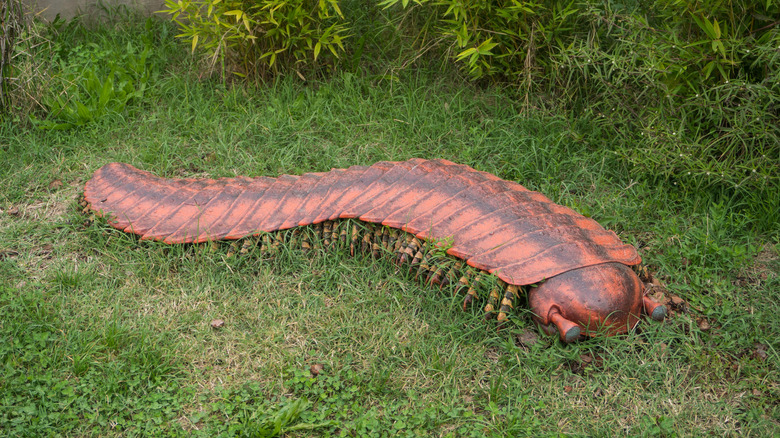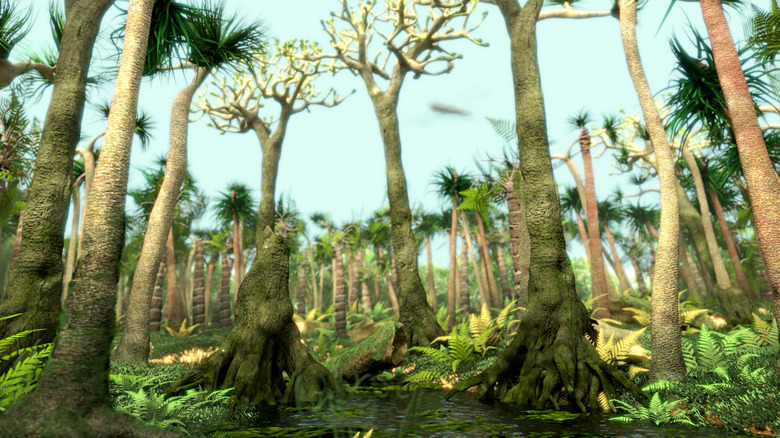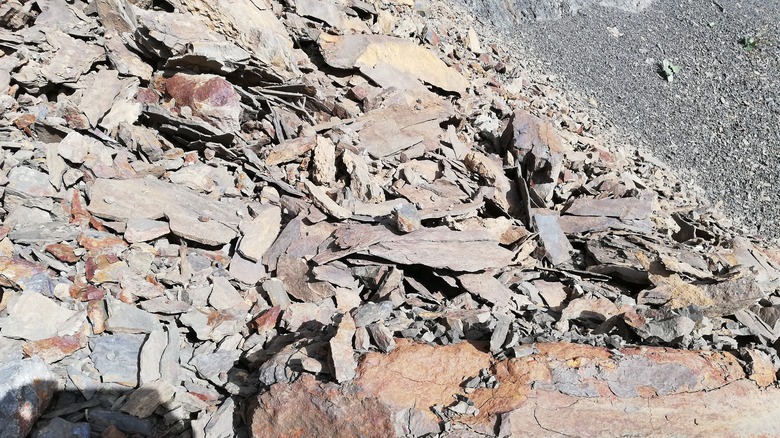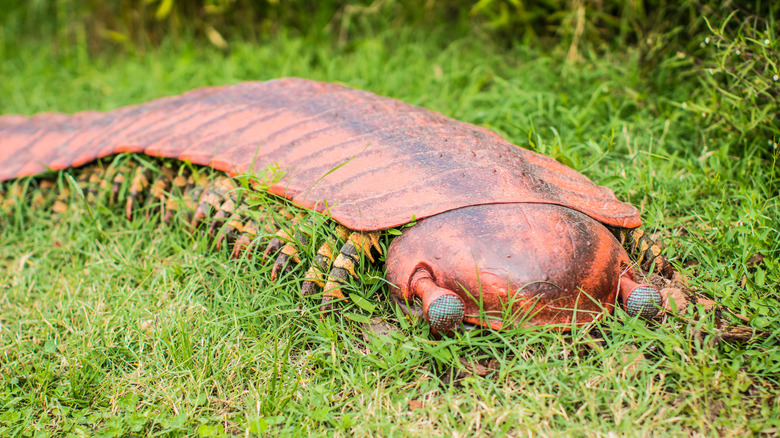The Largest Prehistoric Arthropod Is Pure Nightmare Fuel
Arthropods are all around us today. While several creatures that fall under the designation, such as spiders and insects that live under rocks, can often cause revulsion, for the most part, we're used to arthropods being a big part of our world — which is a good thing because they actually account for around 75% of all animals on Earth.
The term arthropod refers to any invertebrate creature (meaning they lack a backbone) which bears a hard exoskeleton, and aside from the aforementioned spiders, can include many insects and crustaceans. In fact, the array of animals considered arthropods is stunningly diverse, with everything from butterflies to dung beetles falling under the category.
One creature we thankfully don't have to deal with today, however, is the absolute nightmare beast known as Arthropleura. This giant millipede-like creature lived millions of years ago and, while absolutely terrifying, is also one of the most fascinating creatures the fossil record has introduced us to.
The Arthropleura was a giant millipede-like creature
Though arthropods are ubiquitous in the modern world, these days, we thankfully don't have to worry about giant millipedes roaming the land. But more than 300 million years ago, such a thing was very much a reality.
First discovered by scientists in the U.K. back in 1854, the Arthropleura was the largest arthropod of all time, reaching up to 8.5 feet long and more than 100 pounds in weight. This enormous size is thought to be down to plentiful atmospheric oxygen on earth during the time Arthropleura existed. Based on the fossils that have been uncovered so far, scientists estimate that the creature lived in North America and Europe between 290 million and 346 million years ago.
The very first Arthropleura fossils found did not, however, include the creature's head, and subsequent discoveries have only yielded partial heads in fragmented specimens. All of which means that much about the giant animal has remained a mystery since their discovery in the mid-19th century. Now, however the search to find a complete Arthropleaura head specimen has been completed.
The Arthropleura's head revealed for the first time
Though the Arthropleura has been known to scientists since the 19th century, classifying the beast has proven tricky. The generally accepted view is that the creature was a type of millipede, but scientists have debated its taxonomic designation for decades (via Science Advances), and without a fully preserved head to study, this debate seemed set to continue. But in 2024, two well-preserved fossils found in France provided our first glimpse of what the Arthropleura's head looked like — and while it's about as terrifying as you might imagine a giant millipede to be, the discovery also revealed some fascinating facts about the long-extinct animal.
In the 1970s, researchers working at a coal mine in Montceau-les-Mines, France, discovered Arthropleura specimens encased in a mineral known as siderite — one of several types of fossils. The mineral ensured that the remains of the creature had been well-preserved, but until recently, scientists lacked the means to generate an accurate 3D scan of the specimens. In October 2024, researchers working with two Montceau-les-Mines specimens were able to use x-ray micro–computed tomography with synchrotron imagery to create complete scans of the fossils, one of which had a complete head, revealing the antennae, eyes, mandibles, and other mouthparts of the Arthropleura for the first time. The group published their findings in Science Advances.
Arthropleura are a 'mosaic of millipede and centipede characteristics'
The most notable discovery made as a result of the researchers' work is that the Arthropleura had both characteristics similar to centipedes and millipedes — or what paleontologist James Lamsdell called in an analysis of the study, also published in Science Advances, "A mosaic of millipede and centipede characteristics." Its two pairs of legs per body segment are similar to today's millipedes, but the mandibles being fully encapsulated within the head and the second maxillae (or jawbone) is much more akin to centipedes. What's more, the Arthropleura was revealed to have had stalked eyes, making that part of its physiognomy unique when compared to today's millipedes and centipedes. In fact, the stalked eyes are much more typical among aquatic animals, like crustaceans.
Essentially, then you have a giant millipede-slash-centipede-slash-crustacean hybrid just smaller than a car that roamed around in a land full of giant invertebrates, which is a unique combination of interesting and nightmarish. But beyond that, as Lamsdell writes, "The mystery of Arthropleura now appears solved." More specifically, the Science Advances study appears to lend credence to molecular data which offered a new way to look at centipedes and millipedes as belonging to a group called Pectinopoda. Lamsdell surmizes that, "Arthropleura, combining millipede and centipede traits, may be the first morphological support for this molecular-based hypothesis of relationships."
While there are so many more questions surrounding the Arthropleura, the latest discoveries are nothing short of remarkable, and they remind us that even the most terrifying of prehistoric creatures are also infinitely fascinating.



